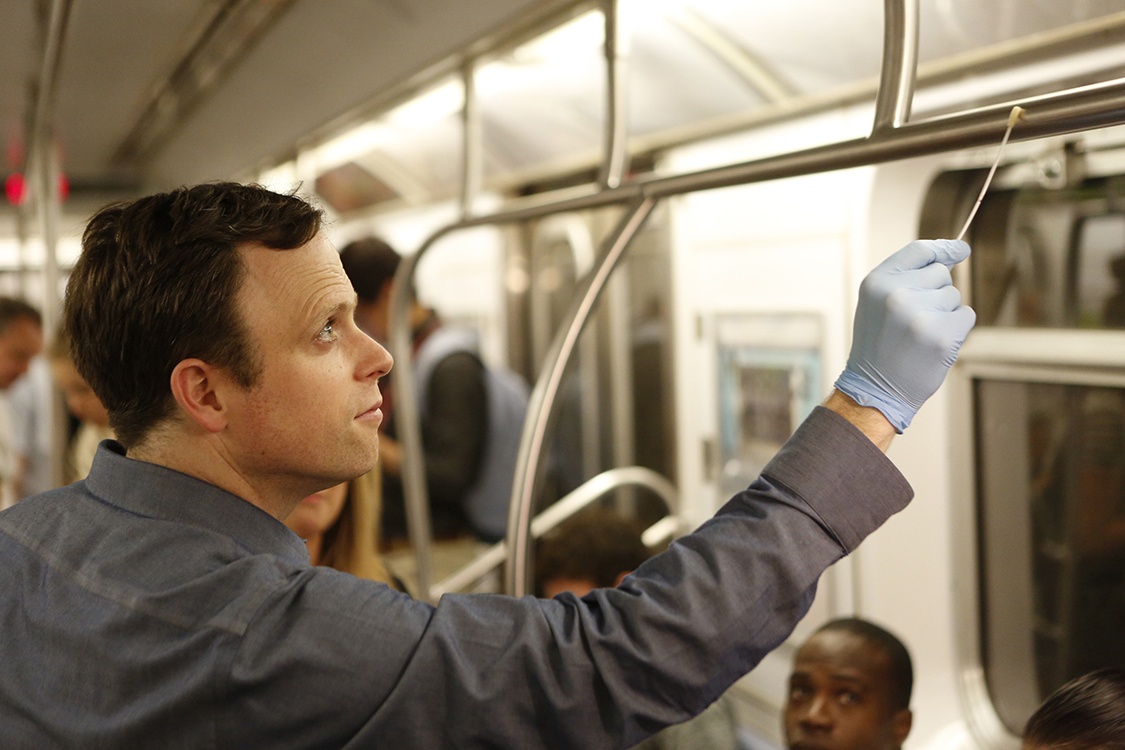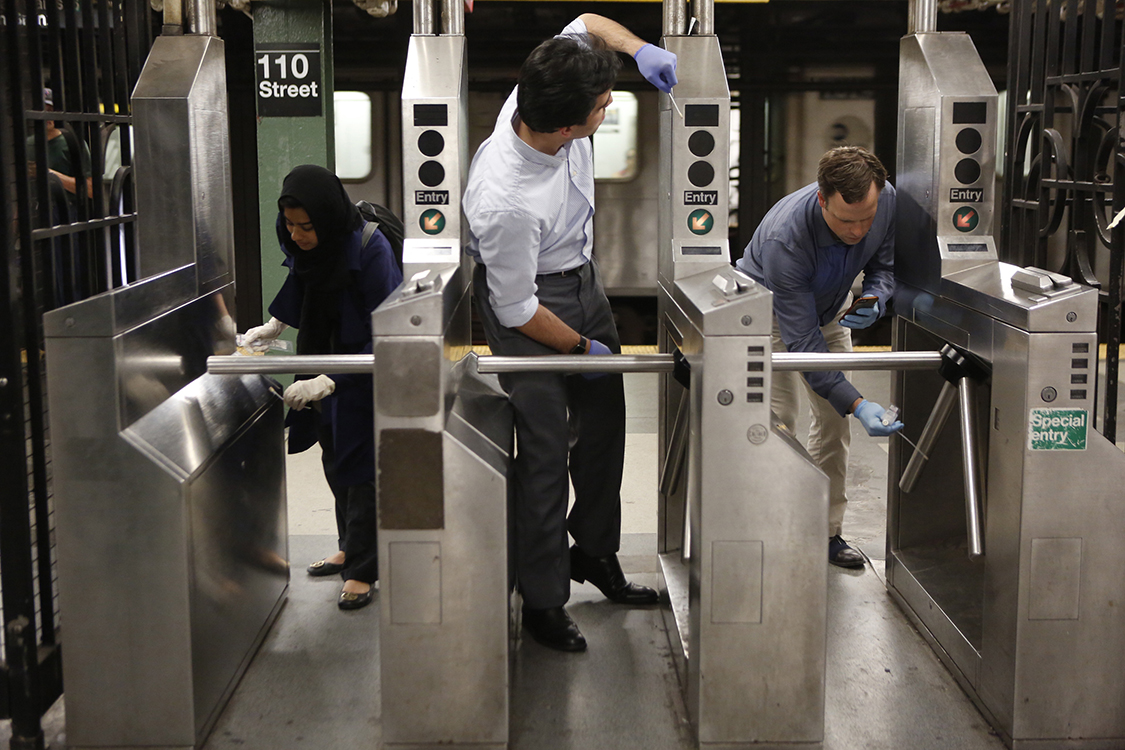'Global City Sampling Day' launches Weill antimicrobial study
By Anne Machalinksi

Weill Cornell Medicine kicked off its international study of antimicrobial resistance June 21 with an event called “Global City Sampling Day.”
Spanning six continents, 32 countries and 54 cities, this synchronized event brought together more than 400 people, who collected about 12,000 samples of DNA, RNA and microbes from surfaces in subways, buses, airports and other well-traveled public meeting spaces.
These samples will be sequenced, analyzed and then used to develop a genetic and epigenetic map detailing the community of microorganisms that inhabit each participating city, known as its microbiome.
This data will help scientists who are part of the MetaSub Global Consortium project better understand antimicrobial resistance in urban centers, and also identify new, naturally occurring drugs made by microbes, known as biosynthetic gene clusters. Investigators will share their findings with local public health officials and city planners, who can use the data to make each city safer and more resilient for the people who live there.
“Global City Sampling Day gives us an opportunity to learn about more than 600 different microbes riding the subway with New Yorkers every day. We are grateful to Weill Cornell Medicine, Dr. Christopher Mason and hundreds of volunteers who are helping us learn more about our city’s health one swab at a time,” said New York City Councilman Ben Kallos, who helped initiate the New York City collection by swabbing a subway station on the Upper East Side with project principal investigator Mason.

“Every time I look around a room or a subway station, I always wonder – what’s there?” said Mason, associate professor of physiology and biophysics and of computational genomics in the HRH Prince Alwaleed Bin Talal Bin Abdulaziz Al-Saud Institute for Computational Biomedicine at Weill Cornell Medicine. “With this work, we’ll be able to answer that question, and not just in New York City, but in locations all over the globe. This is truly the fulfillment of a long-sought goal of genetic understanding of the world around us.”
That understanding began when Global City Sampling Day commenced in Auckland, New Zealand, at noon New Zealand Standard Time – 16 hours ahead of Eastern Daylight Time.
From there, the sampling started at noon local time in each city, moving from Auckland to Melbourne, Australia, and then through Asian cities including Hong Kong and Beijing; Tokyo; and Seoul, South Korea.
It continued to roll out according to time zones around the world – “kind of like the genetics equivalent of celebrating New Year’s as it passes around the Earth,” said Mason, who is also the WorldQuant Foundation Research Scholar at Weill Cornell Medicine.
Samples were collected on every continent but Antarctica, in cities including New Delhi, Moscow, Tehran, Doha, Johannesburg, Rome, Paris, Oslo, Buenos Aires and Bogota. U.S. cities participating include Boston, Chicago, Los Angeles, San Francisco and Seattle.
Throughout the project, the sample collection protocol stays the same regardless of location. Samples were collected with nylon swabs, which were then put in a sterile solution to keep each specimen stable during transport. At each collection site, the investigator logged the sample into an app on their mobile device, and included a geotagged location and metadata about where they were; the current temperature and relative humidity; information about the collection surface (whether it’s concrete, wood, plastic, etc.); the time of day; and other environmental measures. They also took a photo at each collection site then moved on to their next location.
Each sample will either be analyzed locally or frozen and sent to a central processing center for sequencing. The extensive data collection and photo documentation will allow lab technicians to “make sure they have the right sample from the right place matching the right picture,” Mason said.
Although the collection process is the same, that’s where the similarities end. Because each participating city is unique, each had its own sample collection plan, which varied depending on population, location, number of participating collectors and other variables. In Fairbanks, Alaska, for instance, where there is no subway system, collections were made at bus stops and on bus lines, while in New York City, investigators looked outside of transportation centers and made collections in the 1.8-mile-long Gowanus Canal, a contaminated body of water in Brooklyn designated a U.S. Environmental Protection Agency Superfund Site. A number of cities, including Rio de Janeiro and Montevideo, Uruguay, collected samples from their beach sands and shallow beach waters, a subset of the project they called MetaBeach, while other cities, like Boston, took collections from their sewer systems, which they called MetaSew.
In addition to making collections from different locations within each of the cities, some local teams did further work. Boston looked at how many live cells were on surfaces in addition to dead cells. About half the participating cities took live cells back to the lab and will try to culture some of the bacteria there.
The team in Rio de Janeiro will continue to make collections leading up to, during and after the Olympic Games in August. They will look at all kinds of life, including human DNA, insect DNA and bacterial DNA to see how these measures change during and after the Olympics. They hypothesize that the changes will be proportional to the number of people that come from different countries, Mason said.
Anne Machalinksi is a freelance writer for Weill Cornell Medicine.
Media Contact
Get Cornell news delivered right to your inbox.
Subscribe